After my acquaintance with the Valerion VisionMaster Plus 2, which not only left me with the best impressions, but even made me question my preferred UST setup in my living room, I was very curious to try out its bigger brother, the VisionMaster Pro 2.
Endless discussions, countless sponsored reviews and forums bursting with activity — what’s going on? Is it really that good? Or are the reviewers just “cashing in” and finding “everything perfect”?Especially when I see reviewers testing 10, maybe even 20 projectors together in just 15 days and drawing conclusions, while I need 3–4 weeks to thoroughly test a single projector before I can confidently share my opinion.
Valerion graciously responded to my request and sent me the Pro 2, allowing it to take its turn in the Projectorjunkies “interrogation room.” This review aims to satisfy not only your curiosity about its performance, but mine as well.
In this article, you won’t just be read a review of the VisionMaster Pro 2. You’ll witness about a series of “torture tests” I put the Pro 2 through, as well as its performance in direct comparison with the Plus 2 and my favorite UST projector, the AWOL LTV-3500 Pro.
Want to find out what the VisionMaster Pro 2 is really capable of? Just read on…
Valerion VisionMaster Pro 2
The Pro 2 comes in the same excellent packaging as the Plus 2, complete with a beautiful, clever and practical protective case.
This contains the projector, a box with the remote control and power supply and the manual, which is considerably thicker than that of the Plus 2 as it contains several languages and not just English like that of the Plus 2.
In terms of appearance, the VisionMaster Pro 2 won’t disappoint any lover of high esthetics and modern design. With electroplated metal strips on the housing and the gray glass surface on the front and back, it’s a feast for the eyes even when switched off , like a work of art.
The days when projectors like this were just unsightly plastic boxes are over thanks to Valerion. I believe that from now on all manufacturers will also pay special attention to this area.
There is a single hole on the underside for attaching a ceiling mount and an adjustable arm that allows you to tilt the projector around the vertical axis when you place it on a table.
The dimensions are identical to those of its smaller brother, the Plus 2 (260x186x216mm / 10.2×7.3×8.5 inches) but it weight 7.4kg.
The Pro 2 is undeniably stylish, dare I say, it exudes a more luxurious feel compared to its smaller brother, the Plus 2.
In terms of connectivity, the Valerion VisionMaster Pro 2 is well equipped to meet modern requirements. It has two HDMI 2.1 ports and one HDMI 2.0 port, one of which supports next-generation eARC (Enhanced Audio Return Channel) for seamless audio integration.
In addition, the Pro 2 has two USB ports, one USB 2.0 and one high-speed USB 3.2 port (5 Gbps), as well as optical and analog audio outputs. A Gigabit Ethernet connection (Limited to 100Mbps due to Google TV limitations) rounds off the wired connection options and ensures fast and reliable network access.
When it comes to wireless communication, the Pro 2 goes one step further, offering robust and flexible wireless connectivity for all your streaming and devices needs with bi-directional Bluetooth 5.2 and WiFi 6E.
The remote control has remained the same, a really practical and well-designed remote control with illuminated buttons.
Interestingly, the Pro 2 uses the exact same external power supply as the Plus 2, a 36V unit with an identical power output of just 180W.
Valerion VisionMaster Pro 2 Specs & Features
Valerion advertises a brightness of 3,000 ISO lumens and provides two on/off contrast values for the Pro 2: a native contrast of 4,000:1 and a “viewing” contrast of 15,000:1. These contrast values will be analyzed in greater detail in the upcoming sections.
The Pro 2 features a zoom lens with a throw ratio ranging from 0.9 to 1.5:1. This means that, to project a 2-meter-wide screen (78.7 inches or 6.6 feet), the projector must be placed at a distance of 1.8 meters (71 inches or 5.9 feet) to 3 meters (118 inches or 9.8 feet) from the screen (or wall).
The lens is motorized and equipped with autofocus, capable of handling screens with a diagonal size of up to 300 inches. It also has a 100% offset, meaning the bottom of the projected image aligns precisely with the height of the lens.
The Pro 2 is a DLP projector with the well-known 0.47-inch chip from Texas Instruments at the heart of the optical engine. In combination with the latest generation XPR module — which is impressively quiet — it delivers a razor-sharp UHD resolution of 3840×2160 pixels at 60 Hz and an ultra-smooth refresh rate of 240 Hz at 1080p.
The optical system is based on a state-of-the-art pure RGB laser light source. This revolutionary design enables the Pro 2 to achieve an outstanding 110% coverage of the BT.2020 (REC.2020) color space, pushing the boundaries of color reproduction in home projection.
The Pro 2 is fully 3D-capable, supporting all known 3D formats with the use of active DLP Link glasses.
It’s worth noting that the Plus 2 fully supports Dolby Vision & HDR 10+ and also is able to reproduce the 24FPS and 48FPS movie formats without converting them to 60Hz, maintaining the original cinematic frame rates.
At the heart of the Pro 2 like its little brother Plus 2 is one of the most advanced smart TV SoCs on the market — the Mediatek Pentonic 700 (MT9618)— which to my knowledge is being used for the first time in a laser home theater projector series.
This state-of-the-art SoC features a powerful quad-core processor based on Arm’s Cortex-A73 architecture and clocked at 1.4 GHz, as well as an Arm-based Mali-G52 MC1 GPU. It also has 4 GB of DDR4 RAM and a generous 128 GB of internal memory, ensuring smooth performance and plenty of space for apps and media.
The MT9618 chipset powers the Pro 2 with impressive AI capabilities, thanks to the integrated MediaTek DLA AI processor. Its standout features include:
- AI-Super Resolution 2.0: Enhances images with edge smoothing and detail reconstruction.
- AI-Picture Quality Scene Recognition 2.0: Optimizes settings based on scene analysis.
- AI-Picture Quality Object Recognition 2.5: Introduces depth enhancement for more immersive visuals.
The chipset also supports MEMC (motion estimation and motion compensation) for frame interpolation at up to 4K120Hz. However, the Pro 2 utilizes MEMC only up to 4K60Hz due to limitations of DLP technology. Furthermore, it supports the latest video codecs, including AV1, AVS, AVS2, H.264, HEVC (H.265), VVC (H.266), and SHVC.
The Pro 2 is also a gaming powerhouse, supporting 4K at 144Hz, ALLM (Auto Low Latency Mode), Dolby Vision/HDR10+ Gaming, and boasting an input lag of just 4ms at 1080p240Hz and 15ms at 4K60Hz. This makes it a top choice for gamers seeking smooth and responsive gameplay.
Additionally, the projector supports all modern HDR video standards, such as HDR10+ and Dolby Vision, alongside cutting-edge audio formats like Dolby Atmos and DTS. It also features virtual sound effects like Dolby DAP and DTS: Virtual X, ensuring an immersive cinematic and gaming experience.
Finally, I saved the integrated sound system for last! The Plus 2 has two internal drivers, each delivering 12 watts of power and supporting DTS Virtual for a truly immersive sound experience. Don’t make the mistake of assuming that this is just a standard audio system added to the Pro 2 as a gimmick. Once you’ve heard it, you’ll probably be left speechless!
I won’t spend any time analyzing the Google TV smart interface or the tools it offers on the Pro 2, as I’ve already covered these extensively in my review of the Plus 2. In the case of the Pro 2, nothing has changed, it features exactly the same interface and menus as its smaller brother.
Measurements
The Pro 2 comes exceptionally well-calibrated from the factory. To verify whether my unit hadn’t any special adjustments before being sent to me, I performed a full reset before starting my measurements.
In Standard mode, with Warm 1 selected as the white temperature setting and gamma set to 2.2, we achieve a relatively good average grayscale temperature of around 6,750 Kelvin, along with an ideal gamma correction, as shown in the graph.
In Theater mode, which is the mode I would recommend using, the measurements are similar but with a slightly cooler average white temperature, as the blue is significantly better balanced compared to the Standard mode.
The effectiveness of the Pro 2’s controls can be seen in the following graph, where I simply selected a gamma setting of 2.4 instead of 2.2 in the picture settings. The response is outstanding, with perfect gamma correction precisely matching the setting chosen in the menu.
With a few simple adjustments, such as slightly lowering the green in the 2-point white balance adjustment setting, the grayscale on the Pro 2 achieves near perfection.
The Pro 2 covers 94.6% of the BT.2020 color gamut and comes exceptionally well-calibrated, not only in terms of the hues and saturations of the primary and secondary colors but also in their brightness levels.
And now we come to the measurements that might interest most of you: brightness & contrast.
Let me mention here that my measurements for a projector’s brightness and contrast are always conducted with the projector calibrated and always with a light meter directly from the lens, never by measuring the screen or the reflected image. These specific measurements were taken using two different light meters to ensure accuracy.
Brightness
-
2,790 ANSI lumens: Measured with the projector lens set at a 0.9 throw ratio (the widest setting), fully calibrated. This value is the average of five measurements: one at the center of the frame and one at each of the four corners.
-
3,240 ANSI lumens: Measured similarly to the above but with the “Brightness Enhancer” set to low. (I wouldn’t recommend this setting as it significantly increases the power of the green laser, causing the image to turn green.)
Contrast
-
4,449:1: Measured using full black and full white patterns.
-
1,619:1: Measured with a full white pattern and a black pattern containing a bright spot to bypass any hidden laser dimming (which proves that the Pro 2 has). This measurement was taken with the lens at its widest position (throw ratio 0.9).
-
2,240:1: Measured the same way as the above, but with the lens in the “tele” position (throw ratio 1.5).
Further contrast measurements were conducted with EBL enabled. As you understand, when a dynamic contrast is active, there’s no need to use specialized patterns with a bright spot. On one hand, we want to determine the absolute dimming capability of the laser and the true black level. On the other hand, the black level (and contrast) varies based on the brightness of the bright spot (from 10 to 100 IRE) or the size. Therefore, it makes no sense to choose a pattern with a bright spot arbitrarily and present that measurement. Later, in the section analyzing the behavior of the EBL, you’ll find a detailed breakdown of the black level and contrast performance.
-
12,625:1: Measured using full black and full white patterns with EBL enabled and the lens in the widest position (throw ratio 0.9).
-
17,800:1: Measured the same way as above, but with the lens in the “tele” position (throw ratio 1.5).
It’s worth highlighting the difference in contrast depending on the position of the Pro 2’s lens. Additionally, the brightness of 2,790 ANSI lumens when fully calibrated is an incredible level of brightness, allowing the Pro 2 to fill screens of any size, even exceeding 200 inches easily.
Another measurement I took was the power consumption of the Pro 2. The reason for this test was its use of the same 180W power supply as the Plus 2. Here’s what I found:
Power Consumption:
- Full laser power (white pattern): 136W
- Minimum laser power (white pattern): 69W
- Brightness Enhancer Low: 164W
- Brightness Enhancer High: 169W
- Full laser power (black pattern): 69W
- Full laser power with EBL on (black pattern): 49W
The average power consumption during movie playback is less than 100W. Incredible, isn’t it?
Now, how does a projector manage to produce such a high level of brightness with a maximum power draw of only 136W? I hate to disappoint you, but I don’t have an answer for that. However, for those of you who are environmentally conscious or looking to keep your electricity bills in check, the Pro 2 seems like a fantastic choice.
But who are we kidding? We all know why we’re here, so let’s cut to the chase and dive straight into the main event!
Dark Scenes Performance & EBL Function
Like its smaller brother (the Plus 2), the Pro 2 also features this amazing algorithm called EBL (Enhanced Black Level). I spent countless hours measuring, testing and comparing to fully understand how it works.
EBL is an algorithm that analyzes each frame and scene, adjusting the ADL (average display luminance) and automatically fine-tunes various parameters, most notably the laser power and gamma correction of the input signal.
How It Works
The logic behind EBL is simple. Imagine your projector delivers a maximum brightness of 100 nits and a black level of 1 nit with a laser power of 100%. If you now play a dark scene that ranges from pure black (0 nits) to, let’s say 20 nits at the brightest point, the maximum brightness of 100 nits is unnecessary for this scene.
In such cases, the EBL reduces the laser power, say by 50%, while simultaneously applying gamma correction at the same time. This drops the black level to 0.5 nits, a twofold improvement, while all bright points in the scene retain their correct brightness levels, with the brightest remaining at 20 nits.
This is achieved by recalibrating the gamma correction to compensate for the overall brightness reduction that laser dimming causes. For example, a highlight that drops from 20 to 10 nits due to EBL laser dimming is recalibrated back to 20 nits by the gamma adjustment.
The net result is a doubling of the contrast ratio, as the black level is halved, but the bright details remain unaffected. Genius, right?
All these happen fast, really fast, so fast that you can not even notice that the EBL do its things in the background while you are watching a movie.
Contrast & Black Level Enhancement
I spent hours testing and measuring to get accurate results. To evaluate the EBL, I created a pattern with an ADL value between around 0.25% and 2.5% , a typical ADL value for dark or semi-dark movie scenes. The pattern is essentially a black frame with 2.5% of its area varying between 10 and 100IRE.
My goal was to measure the contrast, i mean the difference in brightness between this 2.5% area at all possible IRE levels compared to black (0IRE) at the same frame. All these measurements were, of course, taken with the EBL enabled.
Below you can see the difference in contrast between EBL on and EBL off (EBL on – on red)
For these measurements, I used an i1 Display Pro colorimeter with the diffuser attached, which I pointed directly at the projector’s lens from a distance of 1 meter. I concentrated on measuring the light, nothing else.
Starting at 10 IRE, the contrast improvement with EBL on is dramatic, nearly tenfold up to 40 IRE, with this significant improvement lasting up to 90 IRE.
To visualize this, here is an example with a classic low ADL scene taking overexposed (exactly same expose on both images) with my camera:
EBL off
EBL on
Without EBL, the contrast ratio between black and a 20 IRE highlight for example is 55:1.
With EBL activated, this ratio rises to an astonishing 524:1 at the same points of this scene, a tenfold improvement!
This phenomenal improvement in contrast is achieved through a combination of laser dimming (lowering the black level) and gamma correction (maintaining the brightness of highlights).
The following graph illustrates how the black level improves at different IRE values in my 2.5% ADL pattern. The blue curve shows the black level with EBL off, while the red curve shows how EBL keeps the black level improved even when the pattern reaches a brightness of 90 IRE (EBL on – on red).
This dramatic improvement in black level is not only measurable, but also clearly visible when watching a movie.
Brightness Consistency
I measured full screen patterns from 10 to 100 IRE, both with and without EBL. The EBL algorithm perfectly maintains the brightness on the whole grayscale.
EBL off
EBL on
That practically means that you going to see the bright spots of a dark scene at exactly same brightness as if you have the EBL off.
Practical Implications
And here comes the one million dollar question.
How does the Valerion (with EBL on) compare to other projectors with native contrast ratios of 5,000:1 or even 10,000:1 on dark scenes?
Let’s assume that both projectors deliver the same peak brightness (e.g. 1550 fl, as in my measurements).
With a 5,000:1 projector, the black level would be 0.31 fl (1550 ÷ 5000). Comparing this to the Valerion, we find that with EBL on, Valerion rivals the 5,000:1 projector and even surpasses it in dark scenes containing up to 50 IRE brightness, with better contrast performance and deeper black levels. Here’s the contrast chart up to 60IRE (Valerion on red).
Even when compared to a 10,000:1 projector with a black level of 0.155 fl (1550 ÷ 10000), the Valerion holds its own in scenes containing brightness up to 40 IRE (Valerion on red).
This is the black level compare to a native 10,000:1 contrast projector when in the same frame exists bright spots up to 40 IRE (Valerion on blue).
Real-World Viewing
These measurements are basically for “projectorjunkies” like me, the rest of you should only note the following: The Valerion’s performance in dark scenes most of the cases is comparable to that of a projector with a native contrast ratio of 5000:1 or even 10,000:1, even though it only has a native contrast of 1600:1.
However, in dark scenes with bright highlights above 70 IRE, projectors with a higher native contrast have the edge, as EBL is less important here.
To be fair, however, the ANSI contrast (usually not higher than 500:1) plays a more important role in such scenes than the on/off contrast. Therefore, we cannot say with certainty that the differences we observe in such a dark scene exactly match the figures given for a projector with a native on/off contrast of 1600:1 compared to a projector with 10,000:1. The differences will undoubtedly be much smaller than we thought in first place.
Also, how many dark scenes in a movie actually contain 100IRE bright spots? One? Two? Maybe none at all. This makes it rare to find a scene where the Pro 2 would struggle compared to a projector with a native on/off contrast of 5,000:1 or even 10,000:1.
In 99% of a movie, the Pro 2 performs like a projector with a native on/off contrast exceeding 10,000:1, this is my conclusion.
Essentially, the dark scenes that present a big challenge for projectors with low native on/off but high ANSI contrast (like most DLP-based models) are those typically between 1 and 3% ADL, with gradations usually between 0 and 40-50 IRE. In these scenes, the Valerion shines with its impressive EBL algorithm, outperforming even much more expensive models with significantly higher native on/off contrast.
Here is a good example of not so low ADL dark scene, look again how amazing job the EBL did again. Both image overexposed with the same exactly settings on my camera. Also the images are jpeg strait out of my camera without any processing.
EBL off
EBL on
In my opinion, the Valerion VisionMaster Plus 2 and Pro 2 surpass by far the dark scene performance of any DLP projector on the market today. They can confidently stand shoulder-to-shoulder with home cinema models from Epson and JVC.
Valerion VisionMaster Pro 2 Overall Performance
Dolby Vision & HDR
I’ll start with the Dolby Vision and HDR performance by saying this: If anyone thinks, or has a projector they believe can outperform the Valerion VisionMaster Pro 2 on HDR content, please, be my guest. You’re invited to my home to set it up next to the Valerion and let’s see how it stacks up.
The Pro 2’s immense brightness, combined with its incredible EBL algorithm, creates what I call the “indirect contrast” phenomenon.
This effect is partly about how our eyes perceive contrast between scenes but also heavily reliant on the Pro 2’s capability to deliver such a vast dynamic range between different frames.
You know, it’s not just the contrast within a single frame that matters, it’s also the contrast between frames.
Imagine watching a movie with outdoor scenes under the blazing sun—you’re almost blinded by the Pro 2’s dazzling brightness in those moments. Then, suddenly, the scene transitions to darkness, and it feels as though you’ve fallen into a black hole. The EBL shuts down the laser light source, and in front of you unfolds a dark scene with “black hole” levels of black (or how you perceive it in that moment), yet every detail remains visible to your eyes. This shocking brightness difference between those scenes that makes you think you’re looking at a super-bright huge OLED TV, is what I’ve coined as “indirect contrast.”
The Pro 2 possesses the remarkable ability to deliver this massive “indirect contrast.” While watching HDR or Dolby Vision content, you’re practically blinded during bright scenes and plunged into a black hole during dark ones. I’m not sure if I’m explaining this clearly, but this phenomenon is less intense with its smaller brother, the Plus 2, due to its lower brightness and does not even exists to the light cannon AWOL LTV-3500 pro. I’ll illustrate my point with a couple of screenshots to help you better understand what I’m describing.
Another feature that many people tend to overlook is HDR tone mapping. Essentially, tone mapping is an algorithm that evaluates the incoming signal to ensure it can be properly displayed according to the projector’s capabilities (contrast, brightness, black level, gamma) and adjusts it as needed.
The absence of tone mapping on a projector—or even a TV—is something most of you have likely noticed at some point when watching HDR content. This often results in underexposed scenes, crushed blacks, blown-out whites, and a lack of detail overall.
It’s truly commendable that Valerion included such an important feature in a projector at this price range. Typically, tone mapping is found in much more expensive models, like those from JVC.
And it’s not just the fact that they added this crucial feature, it works flawlessly! If you toggle the tone mapping on and off while watching HDR content, you’ll clearly see the outstanding job it does in optimizing the image.
SDR
As you can imagine, a projector with such high brightness, an expanded color palette, and impressive contrast, is a true oasis when it comes to watching sports events or regular TV content in SDR.
But the Pro 2 doesn’t impress only in that area. With its menu option to enable or disable the Ultra Sharp Mode, it can effectively transform into a native 1080p projector. Additionally, the HDR Enhancer feature brings extra dynamic range to SDR content, simulating true HDR and breathing new life into your old 1080p Blu-ray discs.
If you also select the BT.2020 color profile from the color menu, you might even feel like you’re watching many of your favorite movies for the first time all over again.
Dark Scenes Performance
Okay, Nikos, enough with the Pro 2’s “incredible” dark scene performance—bla bla bla, we get it!
No, guys, I’m not finished yet!
Earlier, we analyzed the EBL feature in detail and how it gives the Pro 2 its outstanding performance in dark scenes. But now, let’s shift gears and talk about something different: what we actually see in these dark scenes.
The Pro 2 comes with a very powerful feature, in my opinion, called “Dark Detail.” Even without it, the Pro 2’s gamma behavior in dark scenes—with the EBL enabled—is already ideal preserving the image perfectly without compressing it or losing any detail. But with “Dark Detail” activated, we take things to the next level of shadow detail.
The combination of “Dark Detail” and EBL ensures that even more details are revealed while maintaining the same contrast and black level and at the same time the existing details in the shadows are even more visible and pronounced.
Typically, features like this in projectors with low to moderate contrast do more harm than good. But with the Pro 2, it does exactly what it promises without any “side effects.”
The result is quite remarkable: excellent black levels, great contrast in dark scenes with EBL, and enhanced visibility of every detail with the Dark Detail. It’s a true win-win scenario!
3D
Dust off your 3D Blu-ray discs, all you 3D enthusiasts, because a new 3D king is here! Or… not quite yet. Sorry to disappoint, but you’ll need to wait for a firmware update. On my unit, the 3D functionality isn’t working at all. I tried everything, but my Blu-ray player simply doesn’t recognize the Valerion as a 3D-capable device. Even when I forced frame packing through the 3D menu, the image would split for 2–3 seconds before the screen went completely black. I am hoping the firmware update resolves this soon, otherwise I’ll be forced to return my free sample unit and demand a refund for the money I didn’t pay! Hear that, Valerion?
Sound, Noise & Thermal Performance
The Pro 2’s integrated sound system is exactly the same as that of its smaller brother. Its performance is, as I described in my review of the Plus 2, a true revelation. I would describe it as a powerful sound system with impressive volume capabilities, yet expertly pre-calibrated. No matter what you throw at it, it consistently handles it with no discernible distortion or change at any volume. And believe me, I pushed it to its limits by asking it to fill a large, really large room with sound, as you’ll see below if you have the patience to read on.
As for operating noise, it may sound like a joke, but the Pro 2 is even quieter than its already whisper-quiet smaller brother, the Plus 2. Honestly, you wouldn’t even know it’s running unless you stalked up close, like a doctor listening to a patient’s heartbeat. Plus, its much larger cooling system dissipates heat better than the Plus 2’s, so it runs cooler. Of course! The fact that it consumes an average of just 100W while you’re watching a movie naturally means it generates hardly any heat at all.
Pro 2 vs Plus 2
And now we come to the big question: how close are these two models to each other in terms of their performance?
I’ll be quick and clear: if you don’t need the extra brightness or the zoom lens of the Pro 2, then the Plus 2 is genuinely a smart choice. In other words, if you want to project onto a screen smaller than 120 inches and can easily position the projector with its fixed throw ratio of 1.2, then the Plus 2 is the right choice for you.
On the other hand, if you want to fill a 150-inch screen in your basement or you’re a 3D enthusiast (although 3D still doesn’t work), then the Pro 2 is the better choice for you.
The differences are minor. The Pro 2 is brighter, but the Plus 2 performs slightly better in dark scenes with EBL enabled — despite what the numbers and measurements, I’ve seen them side-by-side for hours. Honestly, both deliver excellent performance, and even if you choose randomly, you won’t be disappointed.
Okay, now let me be honest with you, none of the above really matters! The Plus 2 has that iconic white Apple-like finish, and that’s it. Case closed!
Here’s a video with a side-by-side comparison between the two of them! Both on 100 inch Celexon Dynamic Slate ALR screen.
Valerion VisionMaster Pro 2 vs AWOL Vision LTV-3500 pro
This is a true battle of giants, my beloved 3500pro versus a newcomer trying to snatch the crown from the veteran.
The LTV-3500pro is an absolute light cannon, and not even the super-bright Valerion Pro 2 can compete with it in this regard. It’s no coincidence that I’ve nicknamed the 3500Pro, for simplicity, “the WOW projector.”
However, the Pro 2 offers sharper image, with its lens delivering razor-sharp clarity, while the AWOL Vision boasts the best 3D performance I’ve seen to date.
When it comes to dark scenes, though, the poor 3500pro doesn’t stand a chance. Once the EBL is activated on the Pro 2 (and even without it), the contrast difference is what I’d call dramatic.
The AWOL Vision’s EBL doesn’t significantly reduce the laser power like the Valerion, which results in much worse black levels but brighter details within dark scenes. It’s a classic case of “damned if you do, damned if you don’t,” as the old saying goes.
Which one would I choose? Honestly, I don’t have an answer, and I feel lucky to have both of them and i don’t have to choose.
Here’s a video showcasing a shootout between these two titans! In this video, you’ll see only dark scene comparisons, as I couldn’t capture the bright scenes with consistent settings on my camera. For some reason, the different laser driver frequencies interfered with the AWOL’s image when I tried to use the same camera settings (basically the shutter speed) for both projectors.
AWOL Vision on 100 inch Vividstorm floor rising screen and the Valerion on 100 inch Celexon Dynamic Slate ALR screen.
What I Didn’t Like About the Valerion VisionMaster Pro 2
-
EBL & Laser Power Output: The EBL feature works only when the laser is set to 100% power. Considering how incredibly bright the Pro 2 is, it becomes nearly impossible to use on smaller screens like mine (100 inches)—the brightness is overwhelming. I know Valerion’s engineers are working hard to provide a firmware update that will enable the EBL to function at lower laser power settings. However, until then, if you plan to use a screen smaller than 120 inches, I would recommend looking at the Plus 2 instead of the Pro 2.
-
Bugs: I encountered some minor software bugs, such as the digital zoom malfunctioning—rather than resizing the frame, it acted like keystone correction and distorted the image’s shape. This was resolved by disconnecting the projector from power and restarting it. Another issue, which I also observed with the Plus 2, occurs when you press “back” in the projector’s menu. Instead of taking you one step back, it exits the menu entirely.
-
Laser Speckle: The brighter an RGB laser projector, the more prominent the speckle effect, especially on traditional ALR screens. To reduce speckle with the Pro 2, I recommend using a white gain 1 screen, a Fresnel screen, or a Vividstorm Fusion-style screen, never a simple ALR screen.
What I Liked About the Valerion VisionMaster Pro 2
-
Brightness: While such high brightness is not particularly useful for my 100-inch screen, it is undeniably impressive. On my screen, the Pro 2 was significantly brighter than my 55-inch TV, for example. For fans of large screens (over 150 inches), this projector offers a serious solution for their huge personal home cinema.
-
EBL: The Pro 2’s performance with EBL enabled in dark scenes is unmatched. It’s almost unbelievable that this level of black depth and shadow detail comes from a DLP projector.
-
Noise and Operating Temperature: The Pro 2 operates so quietly and coolly that you can barely notice it running.
-
Colors and Out-of-the-Box Calibration: The Pro 2 is a projector that owners might never feel the need to calibrate. Even without adjustments, the factory settings deliver impressive color accuracy and excellent gamma/grayscale performance.
-
Dolby Vision, HDR & Tone Mapping: With exceptional tone mapping and Dolby Vision performance that outshines much more expensive models, the Valerion Pro 2 is undoubtedly a top choice for HDR enthusiasts.
-
Google TV: As I mentioned in my previous review of the Plus 2, the Google TV implementation in Valerion projectors is by far the best “smart” projector experience I’ve ever had. Not only is it feature-rich and full packed with apps, but it’s also incredibly fast.
So, there is one last million dollar question that needs to be answered before I conclude my review: is Valerion telling the truth when they claim that the Pro 2 can project up to 300 inches?
No, of course they are not.
The Pro 2 can actually project up to 320 inches — or maybe even more. You don’t believe me? Then grab a cup of your favorite drink, sit back and enjoy a video that Projectorjunkies team has carefully put together with love, just for you.
Conclusion
A projector with 2,790 ANSI lumens (calibrated), unmatched dark scenes performance for a DLP projector, official Google TV at its finest, Dolby Vision, HDR tone mapping, whisper-quiet operation, low operating temperatures, low input lag, amazing MEMC, true 24&48 frames reproduction, a lens with a throw ratio of 0.9 to 1.5:1 for effortless installation, and remarkably good built-in sound—all for $2,099 (while it’s still available on Kickstarter). I don’t think Pro 2 has any real competition in this price range.
Here’s the Kickstarter link, if you’re lucky enough to catch this offer in time https://www.kickstarter.com/projects/valerionvisionmaster/valerion-visionmaster-cinematic-grade-rgb-laser-projector?ref=bko229
Not only I highly recommend the Pro 2, but it has also become the primary projector on my personal home cinema system and for sure the reference projector on my future reviews.
Well done, Valerion!
Stay tuned because the Valerion Fresnel screen review is coming…
Nikos Tsolas


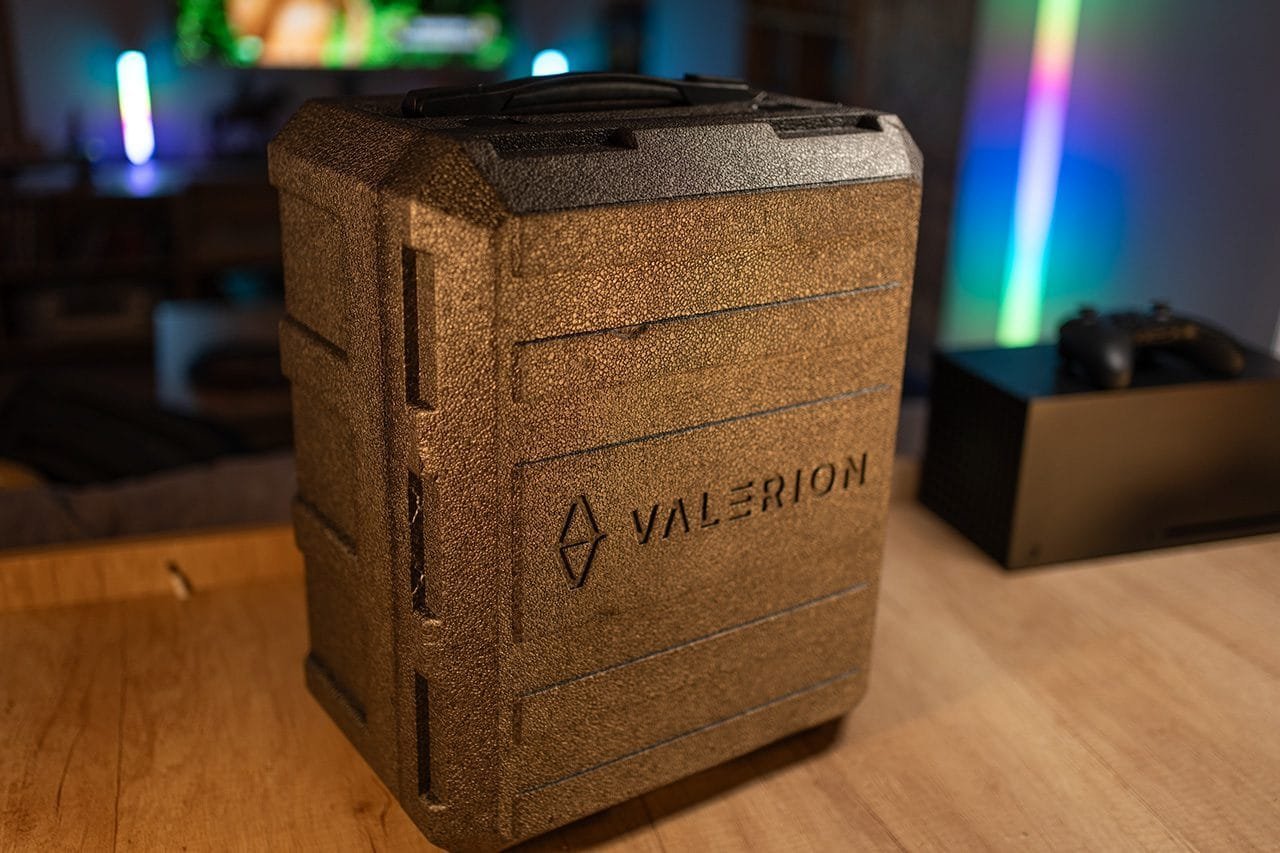

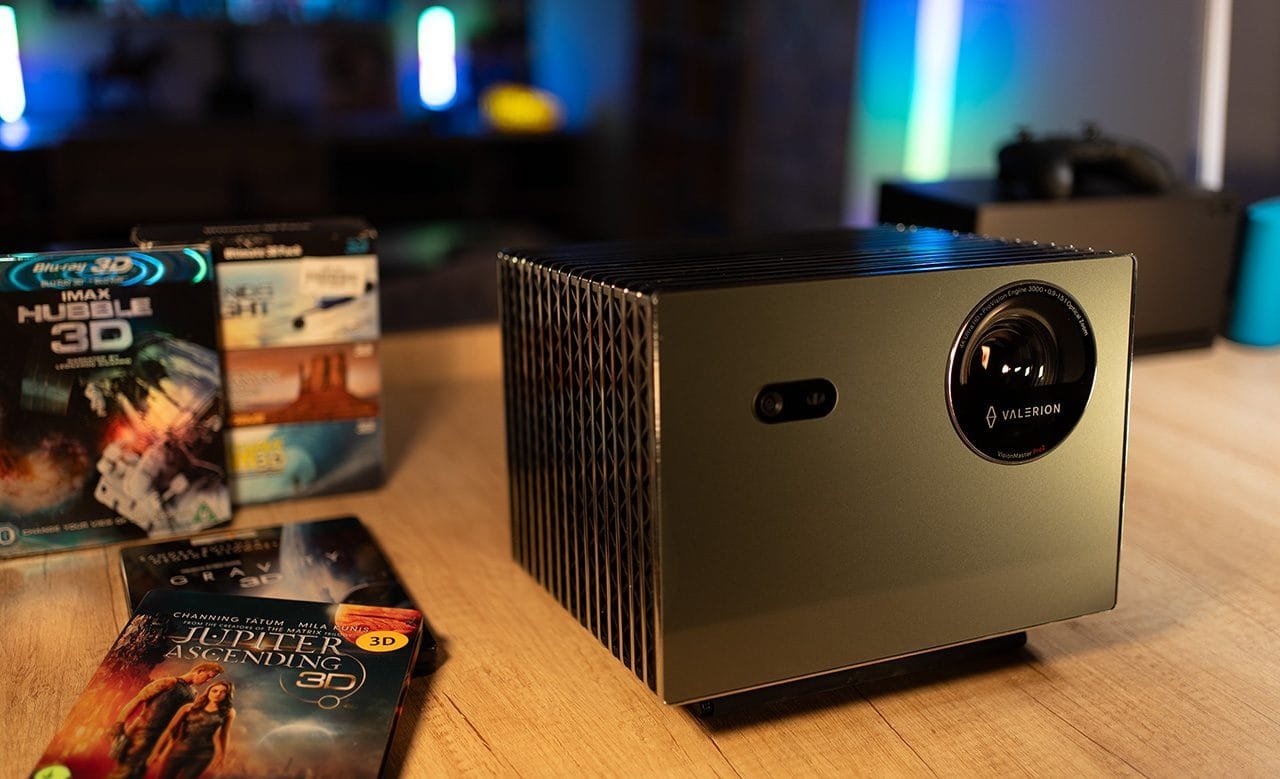
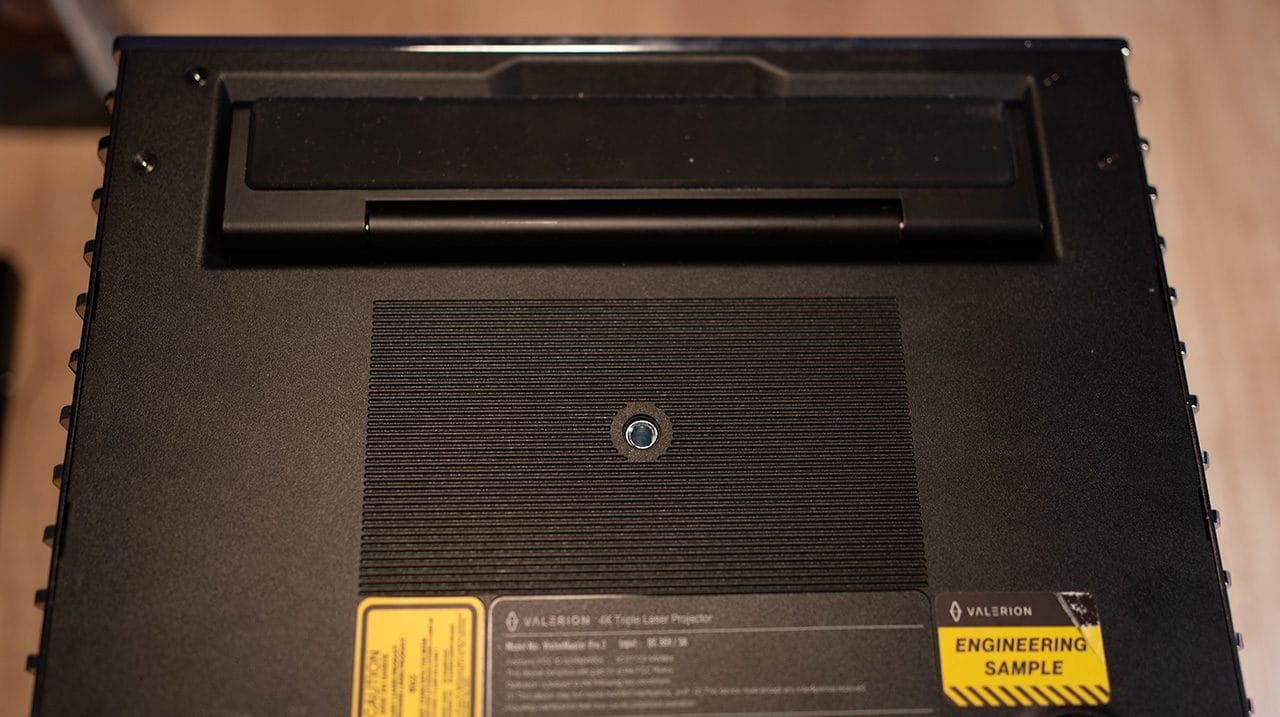










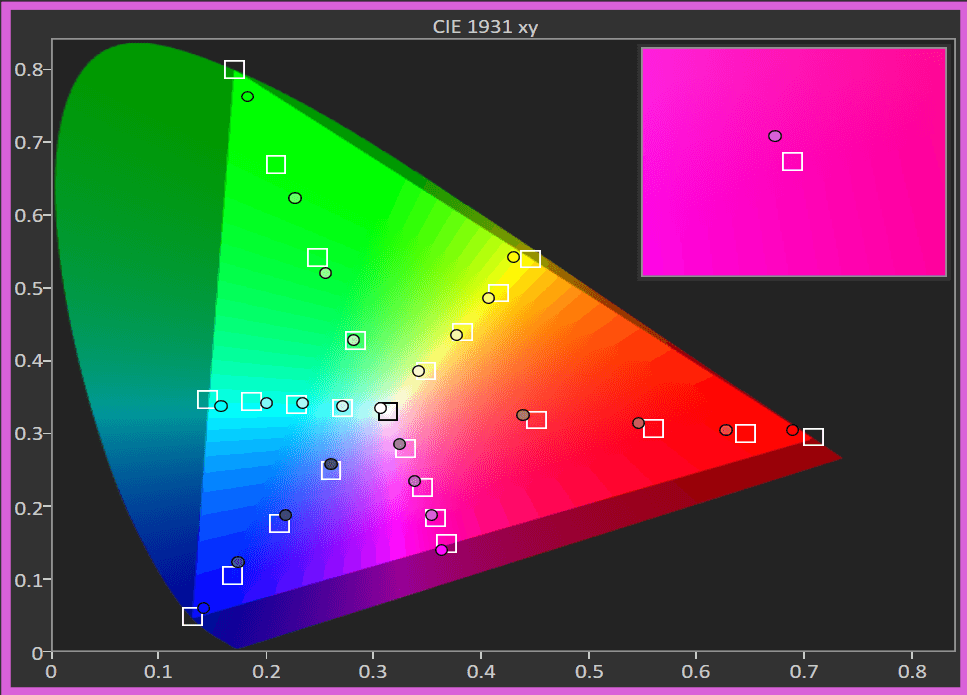


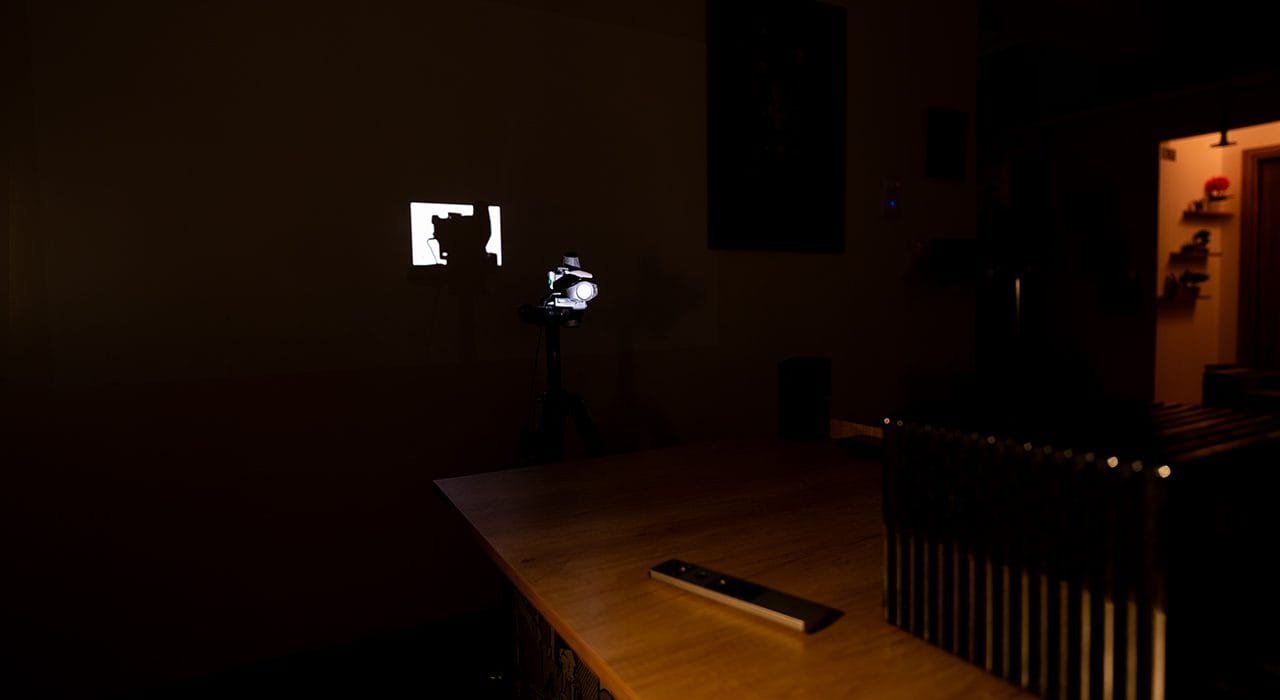



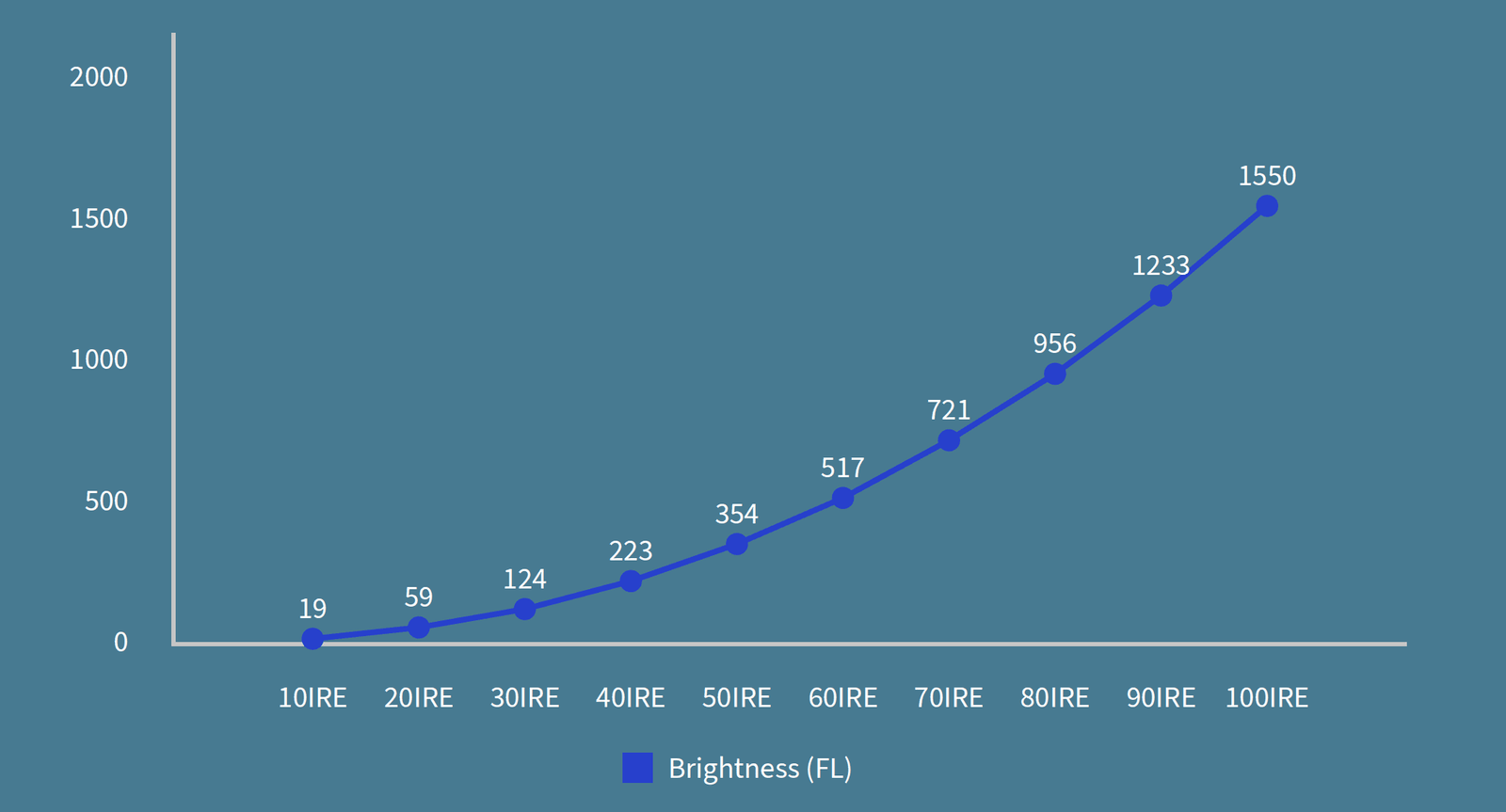



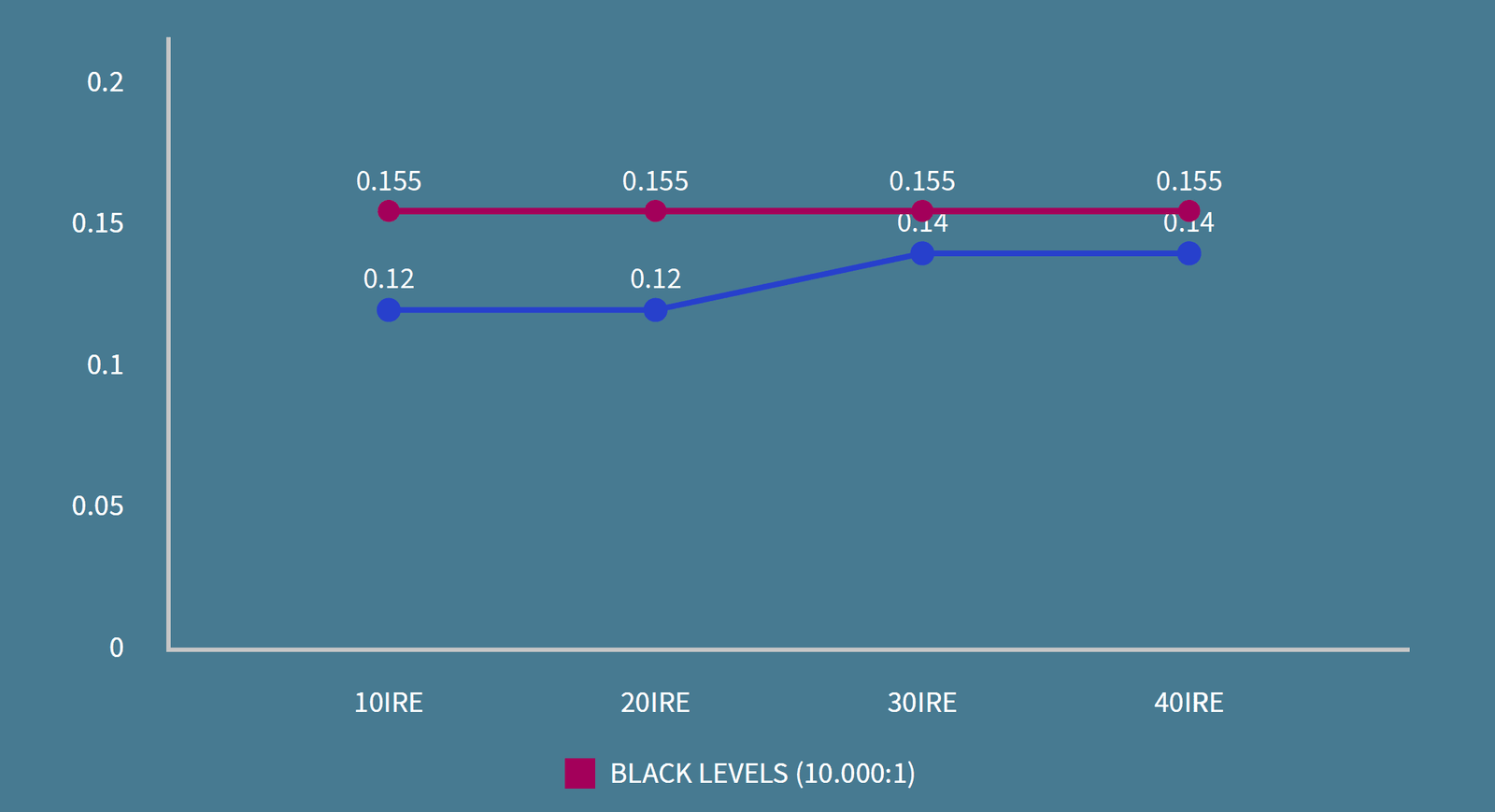
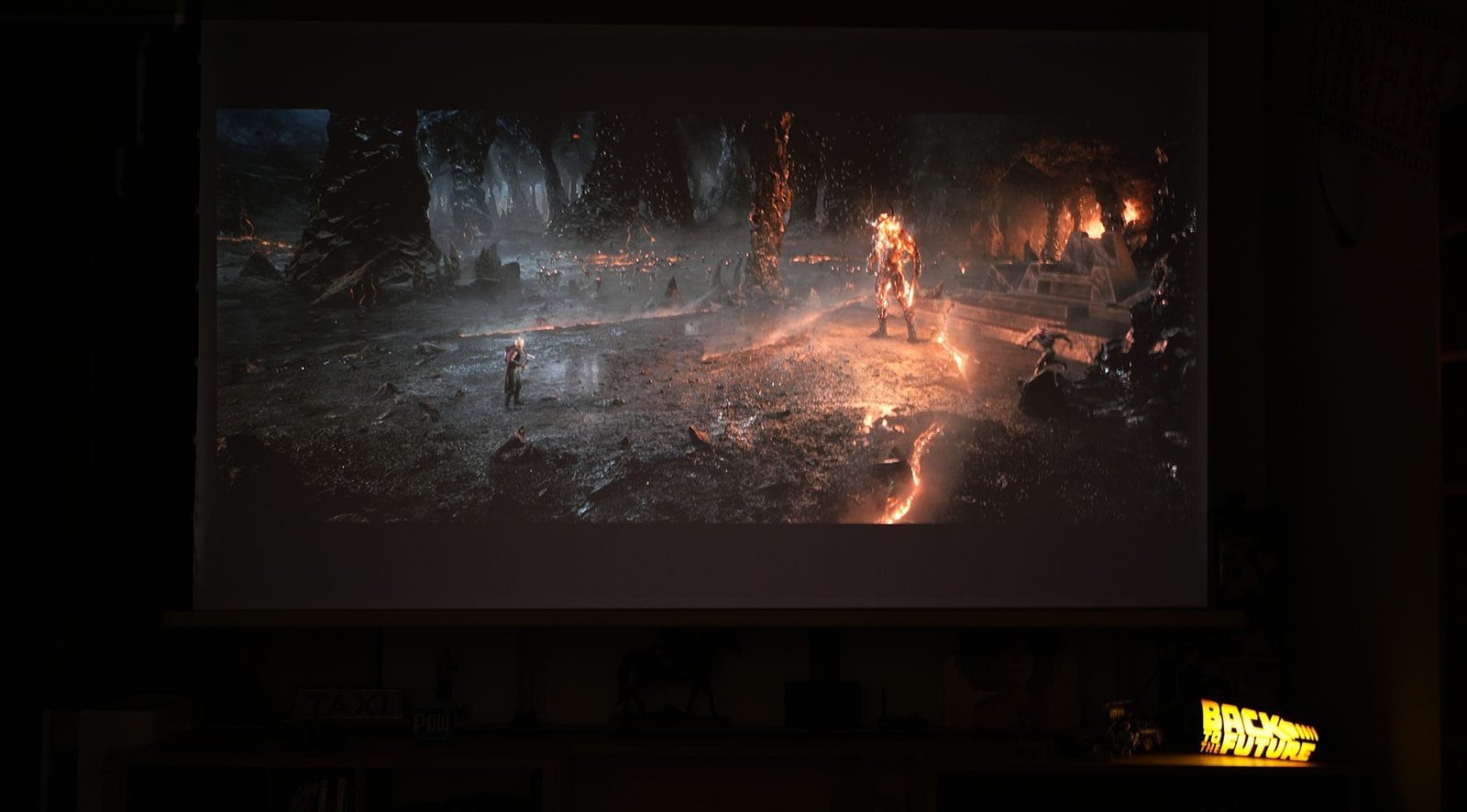


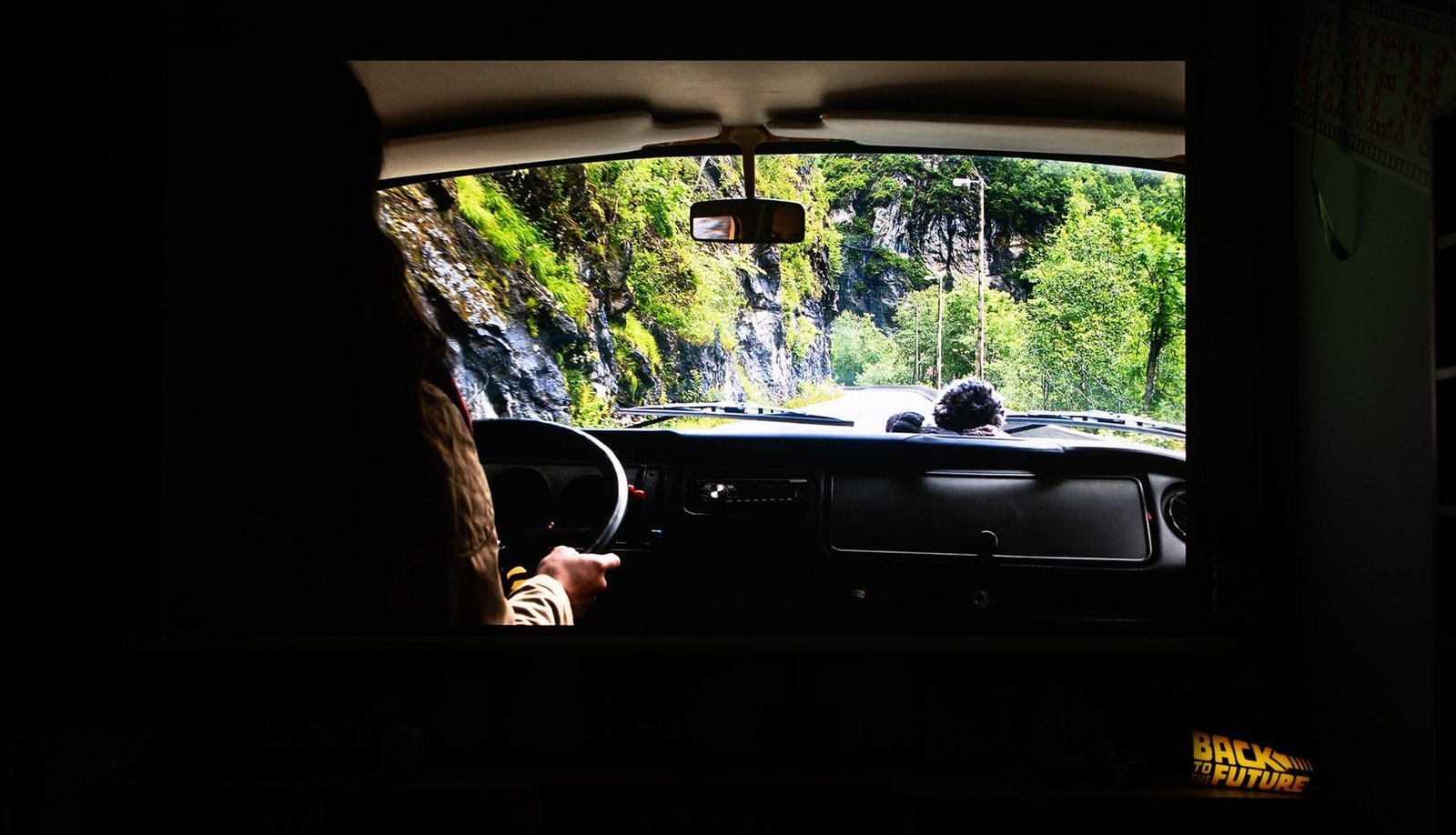



54 Comments
Thanks for the review, quite interesting. Something that I haven’t seen adress before is how long does it take for the handshake like when you switch signa from 25hz to 23.976 or from HDR to SDR?
Cheers,
Tom
Thank you, great in-depth review !!
quite fast, 1-2 seconds perhaps?
This is one of the reason I am upgrading from the JVC RS540. The JVC takes forever to switch. I don’t mind the wait for movies but when watching YouTube clips, it is brutal. So much so, I just turn it off and switch to my Epson which is not that fast, or to a Sony TV in another room. The wife is not happy when I take over the TV. LOL
Thank you for this great review. I have a 110″ screen and am interested in the max.
I realize not much is known about how the iris will be implemented, but given your knowledge, could you help those of us with less knowledge understand if you think the max, with it’s iris, will solve the problem of too much brightness for less than massive screens?
Thank you.
yes, if Valerion put a manual iris setting (they will) you could arrange the brightness according to your taste and space.
How does it stack again a laser long throw pojector?
This is a laser long throw projector
Great review as always. How does the color reproduction compare to plus 2? Is the extra brightness making the colors look more vibrant or just whiter instead?
Also how does this compare to more expensive projectors like JVC and Sony overall, especially in the motion department?
Nope, it’s an RGB laser projector, so the extra brightness translates to even brighter and more vivid colors, not the other way around! The MEMC on the Valerion works flawlessly, providing true 23.976 frame reproduction. Personally, I believe Valerion has set the bar extremely high, even for companies like JVC and Sony.
Excellent review! It’s assuring to see (as a Pro2 backer) it’s is a real deal.
Question: You recommend VividStorm Fusion screen. Have you had any first hand experience in that screen? With Valerion or any other RGB standard throw laser PJ?
Thanks and looking forward to your future reviews.
Hal
Hello Hal, I’ve had the chance to see the Fusion screen, and it’s noticeably superior to a standard ALR screen, particularly when it comes to reducing laser speckle. However, I haven’t tested it in my own setup yet. Since it’s currently out of stock, Vividstorm will be sending me one next month, allowing me to properly measure and evaluate its performance then.
Awesome. I will be looking forward for that review.
BTW – Your reviews are very detailed and thorough. Much appreciate all your efforts. My wife is from Athens, and planning to visit there sometime next year or two. I am going to ride that subway to the theater! 🙂
Thanks, here in Down Under we ‘ll get them in December hopefully.
Valerion will also be releasing some lifestyle screens (floor rising/drop down) soon. No details yet.
Thank you for this great review…i have backed Valerion and will be receiving the Pro2 although i might even get the Max as second unit.
When will you have the Valerion Fresnel review ready because the Kickstarter is ending in just a few days and i still need a screen as this is my first projector.
A fantastic, detailed, objective and meaningful review. I signed up for the Max version last week and am happy to see the Valerion praise continue.
The raw footage of your trip and demo in the commercial cinema was oddly entertaining.
Thank you very much.
No, I thank you David, for your kind words and for enjoying my video!
Stay tuned because the Valerion Fresnel screen review is coming…
Can you tell already that it’s a good buy?
i can in a few days!
Nikos,
Currently I am participating in the Valerion kickstarter at the basic “Plus” 1500 lumensl level.
I have a 16’Lx12’Wx8’H room with a 106″ 16×9 screen. The mount is 10′ away from the screen. I am encouraged by your recommendation for the PLus 2 model for screens less than 120″. Do you think that the brightness and contrast on the “Plus” model will be ok in a room like mine. My room has two 5’x5′ windows that have shades for daytime viewing . What do you think Nikos?
The Plus 2 is my favorite Valerion, but keep it between us! I hope I answered your question, lol.
I appreciate that response. I have to agree, From your GREAT comparative videos, It seems that the Plus 2 model actually performs a bit better than the Pro 2. Seems like the extra brightness is blowing out the contrast blacks and colors a little bit. But I was actually asking about the entry level “Plus” model Given the dimensions of my room listed in my last comment, do you think I’d come close to the Plus 2 results at only 1500 lumens. I’m concerned that the images may be too dark for 3D viewing as those images are dimmed in that mode. Thanks.
This is my conclusion as well after watchin Nikos’s great video on YouTube. The Pro2 exhibits elevated blacks and washed out colors compared to the Plus2. Given my high gain screens, I may not like the Max but I need the lens shift.
I may end up looking for ND filter to cut the brightness of the Max if there is no option lower the laser brightness with EBL on. Maybe the Dynamic Iris on the Max might help, IDK.
Great review!
I ordered the Pro 2, can’t wait!
Question: I have a 112 inch screen and I’d like to place the projector on a bookcase behind my couch, but it exceeds the range for that screen size (a meter over the throw distance range) . Do you know if it’s possible to shrink the beaming area to fit the screen?
Fortunately for you, by choosing the Pro2, you can start by using the Optical Zoom to get as close to the screen size as possible, then tighten down the image to the actual size using digital zoom and maybe some keystoning. I’ve been informed by several reviewers that the SoC chip installed into the Valerion units handles the processing so well that its hard so see imperfections sometimes caused by digital zoom processing of an image. Thats cheers for us since we both have the same issue.
Thank you very much for this excellent test! Small question: My current screen is an ALR with a gain of 0.8 of a size of 120 inches in a living room (vividstorm obsidian 0.8). In your opinion, should I change screens? and according to my environment should I switch to the Plus 2? Thank you very much for everything
(sorry for my English)
No, you do not have to change screen, but how much the speckle will affect your viewing experience, its totally up to your eyes. The Plus 2 can fill up this screen easily. Plus 2= less speckle, Pro 2 = more speckle.
Great review. I was wondering if it was possible to lay the projector on its back to project onto the ceiling?
sure you can!
it has a tripod thread at that bottom of the projector for attaching a tripod or Valerion ceiling mount. If using the ceiling mount, go with Valerion’s unit as it is made to suport the hanging weight of the projector.
Hello. Great reviews! I have a 120” white screen with 1.1 gain. My room has no windows and dark paint. The plus 2 would work next to my loveseat at the recommended distance. I would say it would be off center of course. Probably in the 20 degree range or so. Do you think I would have any light bleed setting up that way? I can always mount on ceiling later if I want. It seems like the pro 2 might be overkill for my situation. The optical zoom would be a nice feature though. Appreciate your thoughts.
1.1 white screen is the perfect screen for the Plus 2. No problem at all to use keystone and play with an angle. The Valerion digital correction is top notch
What a great review and i have really enjoyed your videos’. I have owned projectors for nearly 20 years now, still don’t know much about them, I just enjoy the immersion.
I am a bit worried now that I ordered the Max for my small room, I have a 110 elitescreen cinewhite and 13feet throw, I can just about squeeze in a 120″ screen on the wall. Hopefully ebl will be able to kick in at a lower laser levels by the time they ship the max.
Anyways, thanks again for all the work and detail in the review.
Thank you for that review very inspiring, what about gaming can we expect the same level of contrast while gaming (game mode). Like EBL, advance black and like sdr to HDR with dynamic tone mapping or those are deactivated to reduce latency
everything is working on gaming, only the digital correction (keystone) is not.
Oh really that’s cool I feel like this could bring life to old game that are SDR or etc. Very interesting, thank you and looking forward to your review for the screen this is the missing piece ^^
@Nikos – I have a double screen setup. A 2.8 gain and a 1.4 gain screen. I have pledged for the Max. Will I be looking for a lower gain screen for the Valerian or would what I have work with it. Thanks
oh boy, Max on those screens will hurt your eyes man
I find it amusing that people at AVS are all over the “The Hook Up” review when the best written review of the Valerian is right here by projectorjunkies. This review for by far the best review I have read so far! And I read it twice! Well done Nikos!
Thank you, my friend! I truly appreciate your kind words, they give me the motivation and courage to keep testing and writing!
Cant decide on the Plus2 or Pro2! How much am I going to hate trying to ceiling mount a fixed throw ratio projector?! I need this to go on the ceiling for my situation. Thanks!
The Plus 2 requires incredibly precise measurements to ensure a proper installation. With the Pro 2, you can practically set it up while casually playing a game on your iPhone at the same time!
Thanks! This is my first ‘real’ projector. Was hoping to save a little on the Plus but probably not worth the headache! Hopefully won’t kick myself for not waiting for the Max lol. Great reviews!
For a dedicated home theater blackout room, which projectorwould you recommend? Currently, I have a Wemax A300 UST paired with a 120″ grey ALR floor-rising screen, but I’m considering an upgrade.
if I decide to place the projector on a stand to minimize extra wiring required for ceiling , what is the closest distance it can be positioned in front of the screen? Also, what would be the ideal height for optimal performance?
Hello,
Great review.
What’s the minimum brightness with laser 0 ?
I have an 110′ screen and 2700 lumens is too bright for my screen !
Thanks you for your answer
it can go really low, if i remember correctly around 1300 lumens. But EBL is working only on full laser power!
Thanks you for your answer.
I didn’t know that EBl only worked with the laser at full power.
Is there a loss of sharpness with the digital zoom of the visionmaster plus 2 because I am afraid that the pro2 will be too bright for my base if we cannot use EBL with the laser at 0?
Thanks you
@Nikos
Are you able to share a screenshot and test the Ethernet port to confirm it actually supports gigabit speeds. There seems to be conflicting information regarding this and Valerion is stating it only supports 100 Mbps.
no point, the ethernet port is a gigabit for sure, but the google tv limitation is around 100mbps and there is no other way to increase that speed, no hack, nothing.
That’s a bummer I have a NAS with Remuxes for my 4K. I was hoping to get rid of my Zidoo Z9x pro player since it’s a piece of junk and giving me headaches and from what I was reading the Tone Mapping of the Valerion Projector is superior. To you knowledge is it possible to use the usb 3.0 with an usb to ethernet adapter?
Thanks for checking that. As Tom mentioned, is it possible to use a USB 3.0 to Ethernet adapter and get gigabit speeds? Or even if you get that working is it still limited to 100 Mbps?
I think this might work, as it could bypass the Android TV limitation
I have limited space now and my screen is only 92” , it is at basement with light control. Is pro 2 will be too bright? What about watching Dolby vision material? Is Plus 2 will be bright enough if I will switch to +150” screen?
Thank you for great review! Im hasitating between Max and Pro2 version. I have cca 160″ screen with a chance to get even 180″ one soon. My throw distance is 160″ max. also ceiling mount is a must in my room. So I decided rather for the optical zoom Valerion models to have the precise fitscreen option.
My guestion is:
1) is the Verical lens shift a must when I want the ceiling mount? Or can I simply “FLIP” the picture in the menu and it would work ? The seiling mount sets the lens on the same level as the upper screen edge – and the projector is uo side down.
2) do I need the 3000 ISO brightness? Or is 2000 enough? If 2000 is enough for 160″ I could even go for PLus2… My throw distance is rather on the edge of filling the 160″ screen but it should fit so so…
3) Is the iris (MAX version) a must for that large screen? Or is it rather for smaller screens not to be blinded by the high brightnes?
Sorry for exhaustive list of questions, Im total beginner… Thank you.